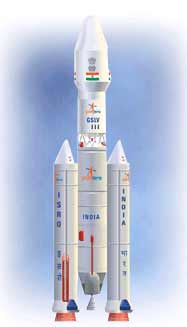Indigenous cryogenic engine to power GSLV-D3
05 Dec 2009
India will join a select group of countries possessing cryogenic engine technology when it launches its biggest rocket, the 49-metre tall, 414-tonne Geosynchronous Launch Vehicle (GSLV), in January 2010. To date, only a few countries like the US, Russia, France, Japan and China possess the technology.
 |
| GSLV-Mk III |
The launch of the GSLV-D3 is taking place in January 2010 instead of December this year as earlier planned. According to ISRO sources, it takes at least 30 days after a satellite arrives at the launch centre to check all systems prior to launch. They said the satellite is yet to reach the launch centre and is expected by the middle of this month.
The GSAT-4 will carry a multi-beam Ka-band bent pipe and regenerative transponder and navigation payload in C, L1 and L5 bands. It will be able to guide civil and military aircraft.
The GSAT-4 will also carry a scientific payload, TAUVEX, comprising three ultra violet band telescopes developed by Tel Aviv University and Israel space agency (ELOP) for surveying a large part of the sky in the 1,400-3,200 angstrom wavelengths.
Meanwhile, intensive checks are being carried out on the cryogenic engine and technical data examined.






























